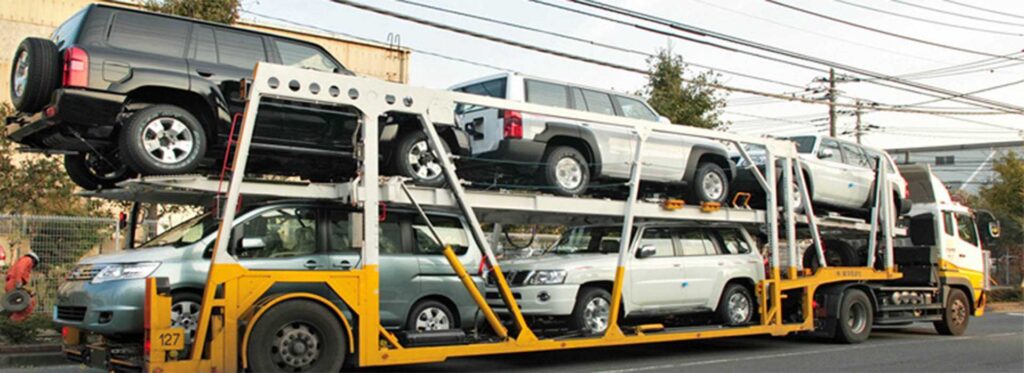Lending your car to someone to make a cross-country drive seems like a simple favor – but as any car owner knows, many things can potentially go wrong along the way. From mechanical issues to accidents and more, this article outlines some of the top risks involved when trusting someone else behind the wheel over thousands of miles.
Mechanical Breakdowns
One of the biggest concerns with a long-distance drive is the possibility of a mechanical breakdown leaving the driver stranded. Cars can develop problems even with routine local driving, and faults are more likely to emerge over thousands of miles on unfamiliar roads.
Common Issues
- Tire failures – Worn or under-inflated tires are at high risk of blowouts, especially when loaded with luggage.
- Transmission/engine problems – Worn parts can fail, especially in high-mileage vehicles.
- Electrical faults – Wiring, sensors, and computer components can malfunction.
- Brake/suspension wear – Components may reach end of life during strenuous drive.
Breakdowns often happen in remote areas far from home, making repairs very inconvenient. Towing or replacing failed parts can rack up big bills. The driver may have to delay their trip while waiting for help.
Prevention Tips
To reduce mechanical risks, it’s wise to have the car thoroughly inspected by a trusted mechanic beforehand. Address any known issues proactively. Also stock emergency items like a first aid kit, jumper cables, flares, tire repair supplies.
Accidents and Traffic Violations
Driving long hours on unfamiliar roads brings risks of accidents, especially for drivers not used to intense highway situations. Fatigue, poor decision making, and higher driving speeds all raise chances of crashes or run-ins with law enforcement.
Potential Outcomes
- Vehicle damage requiring repairs
- Injuries to the driver or other parties
- Traffic tickets for offenses like speeding
- Possible suspension of the car owner’s insurance if the driver is at fault
Accidents mean vehicle repairs potentially costing thousands, not to mention health or legal issues. The car owner also risks their premiums rising from a new accident on record.
Avoiding Trouble
Mitigate risks by only trusting responsible drivers with proven safety records. Clearly discuss rules around speeding, distractions, fatigue. Consider temporarily adding the driver to your insurance with a non-owner policy.
Theft or Vandalism
Unfortunately, theft is always a threat when a vehicle is left unattended for long periods, such as during restaurant or hotel stops. Cars are also vulnerable if parked for the night at remote rest areas.
Protecting the Vehicle
- Use an steering wheel lock or alarm system whenever possible
- Don’t leave valuables visible inside when parked
- Park in well-lit, high-traffic areas whenever stopping
- Install a GPS tracker for locating a stolen vehicle
Thefts can occur even when drivers are cautious. Recovering a stolen car is difficult, and damage or parts theft may still incur repair costs.
Unplanned Expenses
Cross-country trips often involve unbudgeted costs like food, lodging, and unexpected vehicle expenses. Without planning and limits, costs can spiral quickly.
Set Clear Expectations
Have an open discussion about spending responsibilities and limits. Agree whether the driver is responsible for certain expenses like gas, or if you’ll cover some costs. This avoids monetary tensions later.
Issues with Payment Methods
Make sure the driver has reliable payment cards or cash for essential purchases. Out-of-network ATM charges or card denials can cause issues. Provide a backup payment method if needed.
Damage to Vehicle Interior or Contents
Pets, children, careless loading/unloading, or unauthorized passengers all raise risks of stains, tears or broken vehicle parts. Valuables may get lost or damaged. Poor driving habits could prematurely wear out interiors over time too.
Inspect Thoroughly Afterward
Do a walkaround and interior check with the driver present upon return. Note any new issues promptly. Clarify responsibility for repairs upfront to avoid conflicts later on.
Legal Liability Grey Areas
Letting someone borrow a vehicle carries legal risks if an accident occurs. Insurance coverage, responsibility for damages, and authorization for certain activities may not be explicitly defined.
Draft a Loan Agreement
Clearly outline insurance coverage, establish that the driver consents to terms of your policy, and delegate responsibilities in writing. Define authorized/prohibited driving conditions to avoid confusion later.
Final Words
While lending a car for a road trip seems a small favor, unforeseen expenses and consequences can potentially run into the thousands as this article outlined.
With thorough planning, setting clear expectations, inspecting the vehicle thoroughly, and temporarily adding authorized drivers to policies, some risks can be mitigated. But cross-country driving will always carry inherent uncertainties outside a vehicle owner’s direct control.

